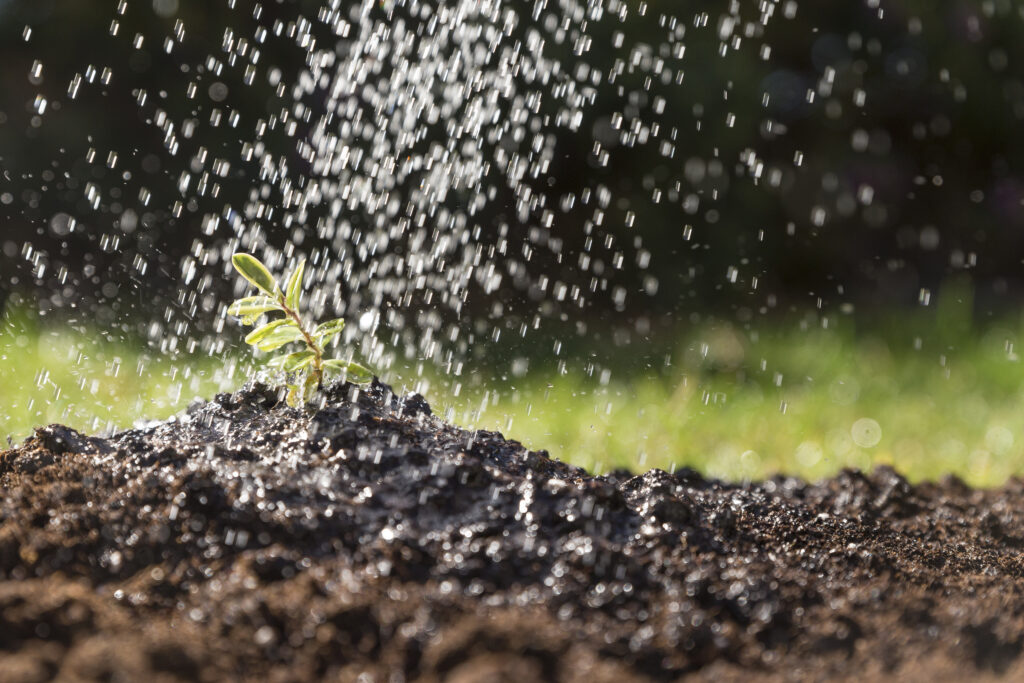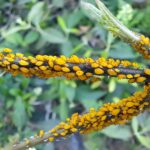We often believe that plants thrive on plenty of water but the reality is that excessive watering can be just as damaging as insufficient watering. If plants are overwatered they can develop root rot, have difficulty absorbing nutrients and in severe instances, the plant may perish.
How can you tell if you have overwatered plants? Below are the top 10 indications that your plant may be overwatered and what you can do to resolve the issue.
Yellowing Leaves
If the leaves of your plant are becoming yellow and dropping, it is frequently an initial indicator of overwatered plants. Yellowing can be caused by other factors such as inadequate light or nutrient deficiencies, excessive water is a primary consideration.
Solution: Examine the moisture in the soil. Allow the top inch or two to dry out before the subsequent watering. If the issue continues, transition to using well-draining soil.
Wilting Foliage (Even with Moist Soil)
Despite the soil being wet, if your plant is wilting, overwatering could be the cause. The roots become saturated with water, hindering the plant’s ability to absorb water effectively.
Solution: Reduce the frequency of watering and confirm that your pot has adequate drainage. A lack of drainage holes in the pot is frequently an unnoticed reason for wilting in waterlogged plants.
Soft & Mushy Stems
Stems that are soft and mushy are not a sign of a healthy plant. When the stems of your plant start to feel soft or mushy, the reason could be overwatering, which has led to root rot, and this problem may be spreading throughout the plant.
Solution: Remove the mushy stems and inspect the roots for any signs of damage. After that, replant the tree using fresh, dry soil, and ensure that it has proper drainage to avoid excessive water retention.
Foul Odors from the Soil
If you notice a musty or sour smell coming from the soil, it’s a sign of overwatering and poor drainage. The excess water creates an environment where fungi and bacteria can thrive, leading to root rot.
Solution: Let the soil dry out and think about repotting the plant in fresh soil. Choose a potting mix that drains well, such as one with perlite or sand mixed in.
Soil surface covered in mold
The presence of mold on the soil surface indicates excessive watering. Mold flourishes in moist conditions, and constantly damp soil offers the ideal setting for its growth.
Solution: Remove the mold by scraping it off and allow the soil to dry before watering again. Additionally, you can enhance air circulation by relocating the plant to a well-ventilated area.
Root Rot
One of the most harmful outcomes of excessive watering is root rot. If roots are exposed to excessively damp soil for an extended period, they will change colour to brown or black, becoming soft and losing their ability to function effectively.
Solution: Take the plant out of its container and examine the roots. Cut off any parts that are decaying and replant the vegetation in new, dry soil. Decrease the frequency of watering to avoid future occurrences of rot.
Fungus gnats
Overwatered soil attracts the fungus gnats, which are tiny flies that linger around plants. These pests thrive in damp soil, and their larvae eat rotting organic waste.
Solution: Allow the soil to dehydrate entirely to disturb the gnat lifecycle process. During serious infestations, think about utilizing neem oils or a sticky trap to capture the adults.
The leaf edges are turning brown.
Brown edges or tips on leaves frequently suggest that the plant is stressed, which could be the result of damage to roots caused by overwatering. This symptom can sometimes be confused with underwatering; however, if the soil remains damp, it is a sign of overwatering.
Solution: Reduce the plant’s watering and ensure sufficient drainage. Brown, damaged foliage may not return, so trim them to promote new development.
Blisters or lumps on the leaves
Overwatering can cause little blisters, lumps, or elevated areas on some plants’ leaves. This disease, known as edema, arises once a plant receives more liquid than it can handle.
Solution: Relocate the plant to a drier area and lessen watering frequency. Check that the soil mixture drains properly to avoid water buildup.
Dropping Leaves
Overwatering can be the cause of your plant’s quick foliage loss, in particular on the lower half. Excessive wetness can choke the root system, making it harder for a plant to sustain its leaves.
Solution: Let the soil dry out and enhance the drainage in your plant’s pot. Check for root rot and remove any infected roots if necessary.
How to Prevent Overwatering
Understanding your plant’s unique requirements is the first step in preventing overwatering. Here are some practical tips:
Check soil moisture: Before watering, feel the upper inch or two of soil. If it seems dry, it is time to water.
Proper Drainage: Make sure your plant containers have drainage holes. Without these, extra water gathers at the bottom, causing root rot.
Use an appropriate soil: Select a well-drained potting mix. For plants that favour drier conditions, such as succulents, add more perlite or sand to aid drainage.
Water Less in Wintertime: Plants use fewer fluids during the wintertime because of lower evaporation rates. Adjust the watering routine accordingly.
Conclusion
The overwatered plant is a widespread yet preventable mistake in plant maintenance. Recognizing early warning signals, such as fading leaves, weak stems, or moldy soil, allows you to take action immediately to rescue your plant. With proper care, a well-drained container, and a planned watering schedule, you can keep the plants you grow healthy, active, and thriving.
By following these suggestions, you may avoid overwatering and achieve a lush and greener collection of plants in no time!



Pingback: How to Deal with Common Pests Affecting Indoor Plants - Organic Kokan
Pingback: How Biochar Can Transform Your Home Garden - Organic Kokan
Pingback: A Guide to Growing Fresh Spices and Herbs at Home - Organic Kokan
Pingback: Tips for Home Gardening in Small Spaces for Beginners - Organic Kokan
Pingback: Best Winter Flowers for Indian Gardens - Organic Kokan
Pingback: How to care for and grow a thriving String of Pearls plant indoors - Organic Kokan
Pingback: How to Revive a Dying Plant - Organic Kokan